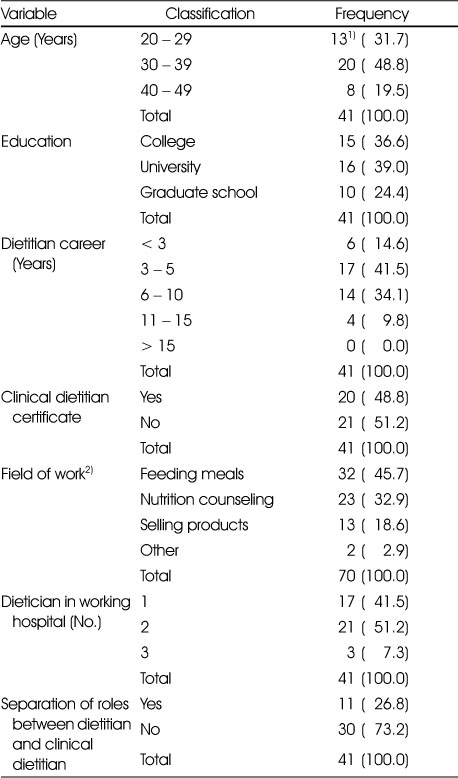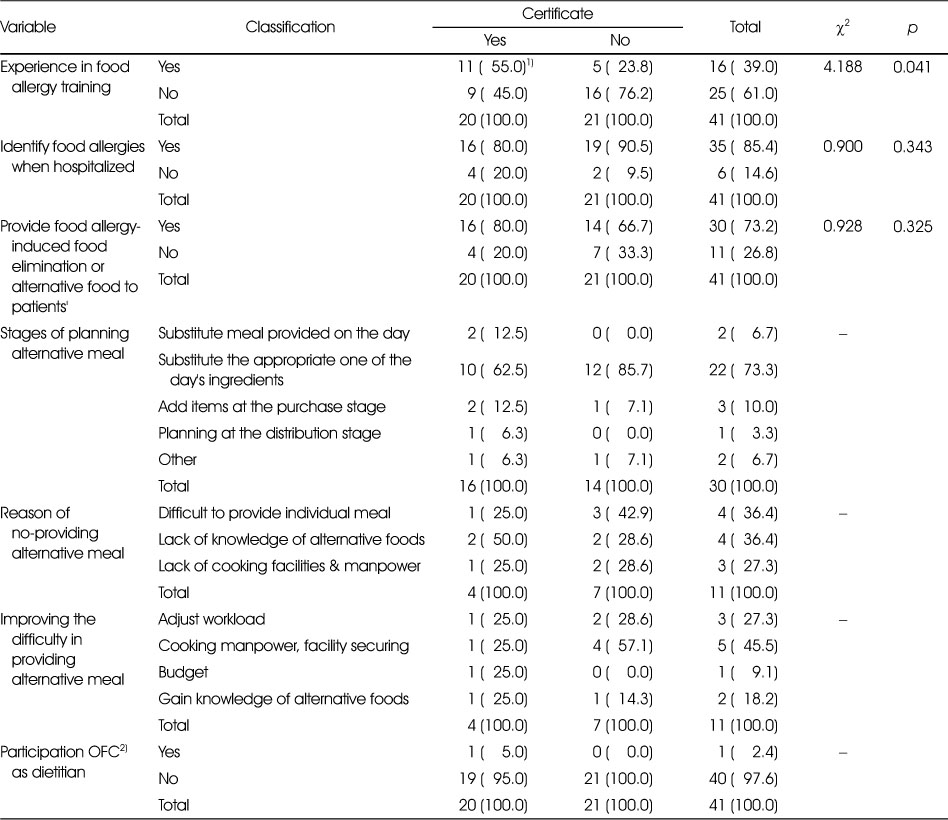References
1. Du GT, Sampson HA, Plaut M, Burks AW, Akdis CA, Lack G. Food allergy: Update on prevention and tolerance. J Allergy Clin Immunol 2018;141(1):30–40.
2. Kim YH, Lee SY, Lee E, Cho HJ, Kim HB, Kwon JW, et al. The change in food allergy prevalence of elementary school children in Seoul since the last 20 years and the risk factor analysis. Allergy Asthma Respir Dis 2016;4(4):276–283.
3. Dunlop JH, Keet CA. Epidemiology of food allergy. Immunol Allergy Clin North Am 2018;38(1):13–25.
4. Sampson HA, Muñoz-Furlong A, Campbell RL, Adkinson NF Jr, Bock SA, Branum A. Second symposium on the definition and management of anaphylaxis: summary report-second National Institute of Allergy and Infectious Disease/food allergy and anaphylaxis network symposium. J Allergy Clin Immunol 2006;117(2):391–397.
5. Boyce JA, Assa AD, Burks AW, Jones SM, Sampson HA, Wood RA, et al. Guidelines for the diagnosis and management of food allergy in the United States: report of the NIAID-sponsored expert panel. J Allergy Clin Immunol 2010;126(12):S1–58.
6. Eigenmann PA, Akdis C, Bousquet J, Grattan CE, Hoffmann-Sommergruber K, Hellings PW, et al. Highlights and recent developments in food and drug allergy, and anaphylaxis. Pediatr Allergy Immunol 2018;29(8):801–807.
7. Oh JW, Pyun BY, Choung JT, Ahn KM, Kim CH, Song SW, et al. Epidemiological change of atopic dermatitis and food allergy in school-aged children in Korea between 1995 and 2000. J Korean Med Sci 2004;19(5):716–723.
8. Kwak TK. The manual of school lunch food allergen labeling Sejong: Ministry of Education; 2012.
9. National Health Insurance Service. Major allergic diseases, children. Adolescence (under 12) occur a lot Wonju: National Health Insurance Service; 2016.
10. Lee SY, Kim KW, Lee HH, Lim DH, Chung HL, Kim SW, et al. Incidence and clinical characteristics of pediatric emergency department visits of children with severe food allergy. Korean J Asthma Allergy Clin Immunol 2012;32(3):169–175.
11. Han SM, Heo YR. Changes of prevalence of food allergy in elementary school student and perception of it in school nutritionist in Korea, 1995-2015. J Nutr Health 2016;49(1):8–17.
12. Kim YH, Lee SY, Lee E, Cho HJ, Kim HB, Kwon JW, et al. The change in food allergy prevalence of elementary school children in Seoul since the last 20 years and the risk factor analysis. Allergy Asthma Respir Dis 2016;4(4):276–283.
13. Lee AH, Kim KE, Lee KE, Kim SH, Wang TW, Kim KW, et al. Prevalence of food allergy and perceptions on food allergen labeling in school food service among Korean students. Allergy Asthma Respir Dis 2013;1(3):227–234.
14. Lee SY. A study for prevention and control of food allergy Cheongju: Korea Ministry of Food and Drug Safety; 2015.
15. Kim SB, Kim JH. Food allergy awareness and nutritional management by the parents of preschool children. Korean J Community Nutr 2016;21(5):426–439.
16. Ministry of Education. Perception of allergenic school food manual Sejong: Ministry of Education; 2012.
17. Chung SJ, Han YS, Chung SW, Ahn KM, Park HY, Lee SI, et al. Marasmus and kwashiorkor by nutritional ignorance related to vegetarian diet and infants with atopic dermatitis in South Korea. J Nutr Health 2004;37(7):540–549.
18. Isolauri E, Sütas Y, Salo MK, Isosomppi R, Kaila M. Elimination diet in cow's milk allergy. J Pediatr 1998;132(6):1004–1009.
19. Palit A, Handa S, Bhalla AK, Kumar B. A mixed longitudinal study of physical growth in children with atopic dermatitis. Indian J Dermatol Benereol Leprol 2007;73(3):171–175.
20. Seo SJ, Shin HS. A study on eating behavior, developmental outcomes of young children, and nutritional attitude and knowledge levels of mothers. J East Asian Soc Diet Life 2009;19(6):839–845.
21. Park SJ, Lee JS, Ahn KM, Chung SJ. The comparison of growth and nutrient intakes in children with and without atopic dermatitis. Korean J Community Nutr 2012;17(3):271–279.
22. Sicherer SH, Sampson HA. Food allergy recent advances in pathophysiology and treatment. Annu Rev Med 2009;60:261–277.
23. Venter C, Laitinen K, Vlieg-Boerstra B. Nutritional aspects in diagnosis and management of food hypersensitivity: The dietitians role. J Allergy Clin Immunol 2012;120(2):11–22.
24. Kris-Etherton PM, Akabas SR, Bales CW, Bistrian B, Braun L, Edwards MS, et al. The need to advance nutrition education in the training of health care professionals and recommended research to evaluate implementation and effectiveness. Am J Clin Nutr 2014;99(5):1153S–1166S.
25. Maslin K, Meyer R, Reeves L, Mackenzie H, Swain A, Stuart-Smith W, et al. Food allergy competencies of dietitians in the United Kingdom, Australia and United States of America. Clin Transl Allergy 2014;4(1):37.
26. Groetch ME, Christie L, Vargas PA, Jones SM, Sicherer SH. Food allergy educational needs of pediatric dietitians: A survey by the consortium of food allergy research. J Nutr Educ Behav 2010;42(4):259–264.
27. Franz MJ, Boucher JL, Evert AB. Evidence-based diabetes nutrition therapy recommendations are effective: the key is individualization. Diabetes Metab Syndr Obes 2014;24(7):65–72.
28. Ministry of Health and Welfare. National nutrition management law [Internet] Ministry of Health and Welfare; 2015. Updated 2015 Jan 5. cited 2017 Jan 11. Available from:
http://www.law.go.kr.
29. Kim YJ. Comparison of the perception for food allergy between nutrition teachers and children in elementary and middle school [Master's thesis] Chung-Ang University; 2010.
30. Kim YS, Park EJ, Lim YS. A study on food allergy practices of dietitians at schools in Korea. J Korea Soc Wellness 2014;9(4):251–261.
31. Kim YM, Heo YR, Ro HK. Perception and practices regarding food allergy of elementary and middle school nutritionists in the Jeonnam area. J Korean Soc Food Sci Nutr 2013;41(1):151–161.






